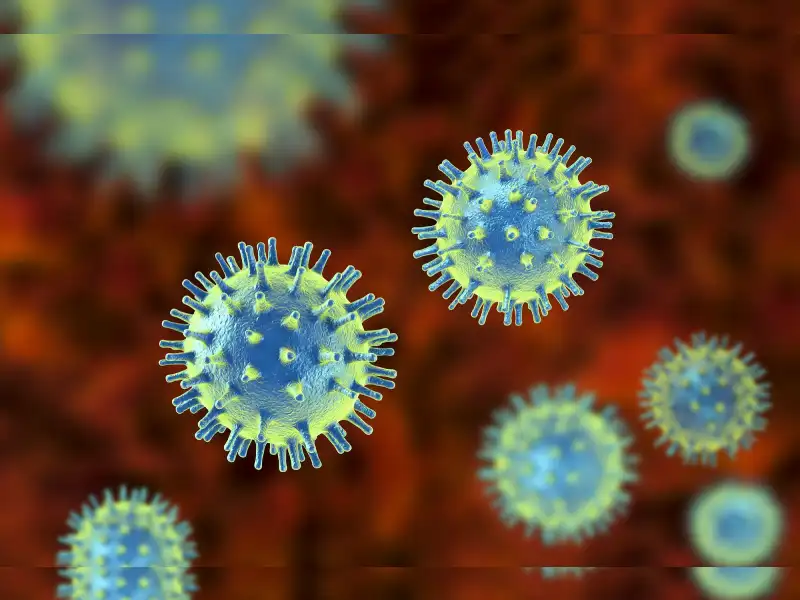About 60% of newly emerged, re-emerging viruses originate from animals: Report
By Anurag Mallick
Hyderabad: The deadly Corona virus has now affected over 2,400 people in China and over 76,000 cases have been confirmed in the country. Now, a report based on data released by the World Health Organization (WHO), US Centre for Disease Control and Prevention (CDC), and the Office International des Epizooties (OIE), shows that nearly 60 per cent of newly-emerged and re-emerging pathogens originate from animals.
A vaccinologist, Dr. Melvin Sanicas, tweeted, "About 60% of newly emerged & re-emerging pathogens share a common origin: #animals. When we cut down the forests where they live, they roost in our backyards & farms instead." As an example, he listed out a few viruses that have emerged in recent years like Marburg, Ebola, Hendra, Nipah, SARS, MERS & COVID-19 (formerly called Corona virus).
The report mentions the name of the virus, the place of origin, former name, reservoir host, intermediate host, incubation period, and case fatality. Marburg first originated in Frankfurt, Germany and Belgrade, Serbia, in 1967. It was formerly known as Marburg haemorrhagic fever. The reservoir host was the African fruit bat. Intermediate hosts were aethiops. The incubation period was from two to 21 days. Fatality rates were from 24 to 88 per cent, depending on the strain and case management.
Six viruses which have animal hosts
Ebola first originated near Ebola river in Zaire, now known as the Democratic Republic of Congo. It was formerly known as Ebola haemorrhagic fever. Most likely, the reservoir hosts were fruit bats and the intermediate hosts were chimpanzees, gorillas, apes, and baboons. The incubation period was from two to 21 days and an average of eight to 10 days. The case fatality was 25 to 90 per cent.
Hendra originated in 1994 in Australia. It was formerly known as equine morbillivirus. The reservoir host was fruit bats or flying foxes and the intermediate hosts were horses. The incubation period was from five to 21 days in humans and five to 16 days in horses. The infection is rare but the fatality rate is 57 per cent.
Nipah first originated in Malaysia in 1998. Formerly known as Hendra-like virus, its reservoir hosts were fruit bats and intermediate hosts were pigs. The incubation period in humans is four to 20 days and in pigs seven to 14 days. The case Fatality rate is 40 to 75 per cent, depending on clinical management.
SARA, which originated in southern China between November 2002 to July 2003, was first named atypical pneumonia a.k.a SARS-CoV-1 of SARSr-CoV. The reservoir hosts were horseshoe bats and intermediate hosts were civets. The incubation period was from two to seven days but went up to 10. The general case fertility rate was 9.6 per cent but when the age crosses 64, it goes up more than 50 per cent.
MERS originated in Saudi Arabia and was known as Camel flu and also Novel Coronavirus in 2012. The suspected reservoir is bats and intermediate hosts are dromedary camels. The incubation period was four to five days in Saudi Arabia, six to eight days in South Korea. Fatality rates in Saudi were 22 to 69 per cent, while in South Korea it was 20 per cent.
COVID-19 originated from Wuhan, China. It was formerly known as Wuhan Coronavirus, novel Coronavirus 2019, 2019-nCoV. The suspected reservoir is bats. The mean incubation period is five days but could be as long as 24 days. Preliminary research shows fatality rates between two to three per cent.
'Virus spreads only if they are efficient'
According to the report, 60 per cent of pathogens emerged or re-emerged from animals. Speaking on the same, director of CCMB Rakesh Mishra said, "Animals are not the main cause. For example, if someone sneezes on an animal and the other person touches the animal, it spreads. It's like a common cold. Sneezing and touching people, shaking hands etc. New viruses are in our body and nature. Most of the time, they are inefficient and go unnoticed and die out. It spreads when they are efficient, which is very rare. It is not primarily due to animals except in some cases."
He said that the virus does not spread through an animal. "It can happen rarely. If the animal carrying the virus coughs or sneezes or licks a fruit, then it spreads. The virus spreads only through humans. All the people infected are not bitten by bats. If there is more movement of people from one country to other, the spread will increase," he said.
Speaking on the same, infectious disease specialist, Sunitha Narreddy said, "Pick the infections that we have now, like dengue, malaria, chikungunya, H1N1. All are from animals. Not considering the percentage, a lot of infections are animal-born. The influenza virus comes from birds to humans. There are some infections which spread from animals to humans and don't normally affect humans. It means it can affect one person but can't move to another person. Some viruses spread from person to person which lead to the problems we are now facing. The micro-organisms are very very smart. We come up with mechanisms to get rid of one but end up with 100 new ones in the process. The way God has made nature, I don't think we can defeat nature. Are we likely to see more and more of these? Very likely. "